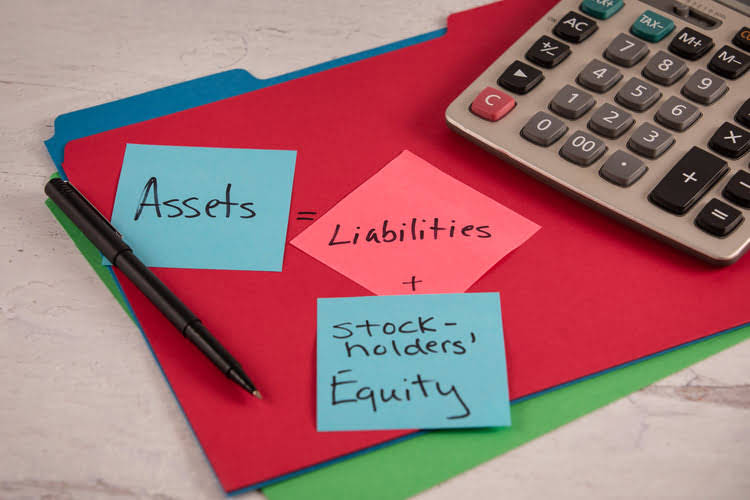Content

Because Sara’s copier’s useful life is five years, she would divide 1 into 5 in order to determine its annual depreciation rate. Before you can calculate depreciation of any kind, you must first determine the useful life of the asset you wish to depreciate.

For economic depreciation, see Depreciation and Fixed capital § Economic depreciation. For the decrease in value of a currency, see Currency depreciation. Depreciation expenseXYZ Accumulated depreciationXYZThe credit is always made to the accumulated depreciation, and not to the cost account directly. The straight-line method is the simplest method for calculating depreciation. When we mark the amount of depreciation charge and the charging periods on the graph the result is a straight line. One glaring exception to this is Section 179, which lets you deduct the full cost of some assets in a single year (up to $500,000 total).
Straight Line Depreciation For Your Business
A strong form finance lease is one that has a transfer of ownership, a bargain purchase option , or a purchase option the lessee is reasonably certain to exercise. With a strong form lease, the asset is depreciated over the useful life of the asset as it is assumed the lessee will own the asset at the end of the lease term. For weak form finance leases where the lessor retains ownership of the asset at the end of the lease term, the asset is depreciated over the shorter of the useful life or the lease term. Because this method is the most universally used, we will present a full example of how to account for straight-line depreciation expense on a finance lease later in our article. According to straight-line depreciation, this is how much depreciation you have to subtract from the value of an asset each year to know its book value.

Dummies has always stood for taking on complex concepts and making them easy to understand. Dummies helps everyone be more knowledgeable and confident in applying what they know. Let’s take an example to understand the calculation of the Straight Line Depreciation formula. This is very important because we need to calculate depreciable values or amounts. The depreciation of vehicle will stay 1,950 every year for the 10 years if situation remains the same. The total amount of depreciation is $105,000 divided by five years (i.e., $21,000 per year). Hence, the Company will depreciate the machine by $1000 every year for 8 years.
Straight Line Method Of Depreciation Calculator
Jason has decided to purchase the new Suds-o-Matic 5000 for his car wash. The cost of the machine is $500,000 and at the end of its ten-year life, Jason can expect to sell the equipment to a used parts store for $25,000. Straight-line depreciation is a method of depreciating an asset whereby the allocation of the asset’s cost is spread evenly over its useful life.
How do you record a straight line depreciation journal entry?
In accounting, the straight-line depreciation is recorded as a credit to the accumulated depreciation account and as a debit for depreciating the expense account.
Straight line depreciation is the simplest way to calculate an asset’s loss of value over time. It is used for bookkeeping purposes to spread the cost of an asset evenly over multiple years. It can also be used to calculate income tax deductions, but only for some assets, like nonresidential property, patents and software. The units-of-production method is calculated based on the units produced in the accounting period. Depreciation expense will be lower or higher and have a greater or lesser effect on revenues and assets based on the units produced in the period. The choice of depreciation method can impact revenues on the income statement and assets on the balance sheet. There are various methods that can calculate depreciation expense for the period; the method used should reflect the asset’s business use.
Accounting For Management
Existing accounting rules allow for a maximum useful life of five years for computers, but your business has upgraded its hardware every three years in the past. You think three years is a more realistic estimate of its useful life because you know you’re likely going to dispose of the computer at that time. If we are using Straight-line depreciation, the first and the last year of the asset’s useful life would see a half-year depreciation.
Accumulated Depreciation and Depreciation Expense – Investopedia
Accumulated Depreciation and Depreciation Expense.
Posted: Sat, 25 Mar 2017 17:57:46 GMT [source]
The depreciation method used should allocate asset cost to accounting periods in a systematic and rational manner. Because different companies consider different factors when calculating depreciation , there are a range of different depreciation methods that you may decide to use in your company accounts. We’ve put together a brief introduction to each one, so you can choose the best depreciation method for your business’s needs. For investments, the cost basis of the asset is usually the total amount you originally invested in the asset plus any commissions, fees or other expenditures involved in the purchase. For tax purposes, it’s important to note if you reinvested any dividends and capital gains distributions rather than taking those distributions in cash.
Example Of Straight Line Depreciation
The salvage value is the amount the asset is worth at the end of its useful life. Whereas the depreciable base is the purchase price minus the salvage value. Depreciation continues until the asset value declines to its salvage value. Regardless of the depreciation method used, the total depreciation expense recognized over the life of any asset will be equal.

But, in case of the income tax purposes, if the asset is in use for more than 180 days, the depreciation charge will be for the full year. Under the straight-line depreciation method, the division of the cost of the asset is equal during its useful life. So that depreciation charged is equal for every year for the entire useful life of that asset.
Straight Line Depreciation: How To Calculate It
He is the sole author of all the materials on AccountingCoach.com. Crystalynn Shelton is an Adjunct Instructor at UCLA Extension where—for eight years—she has taught hundreds of small business owners how to set up and manage their books. Crystalynn is also a CPA, and Intuit ProAdvisor where Crystalynn specializes in QuickBooks consulting and training.
- Accumulated depreciation is eliminated from the accounting records when a fixed asset is disposed of.
- To illustrate SYD depreciation, assume that a service business purchases equipment at a cost of $160,000.
- This deduction is fully phased out for businesses acquiring over $2,000,000 of such property during the year.
- The amount reduces both the asset’s value and the accounting period’s income.
- IRS tables specify percentages to apply to the basis of an asset for each year in which it is in service.
- Like most business expenses, you must keep all receipts, titles and contracts that show the date of purchase, you as the listed owner, and the amount that you paid for every asset.
An accelerated depreciation method that results in a high depreciation expense in the early years, followed by gradually decreasing depreciation expenses in subsequent years. To find the double-declining balance, multiply 2 by the straight line depreciation percentage and by the book value straight line method formula at the beginning of the period. You’d use this method for property that depreciates faster in its first few years of use, such as a company vehicle. QuickBooks is our recommended accounting software for small businesses. Unfortunately it will not calculate depreciation expense for you.
Straight Line Depreciation
However, the rate at which the depreciation is recognized over the life of the asset is dictated by the depreciation method chosen. You would also credit a special kind of asset account called an accumulated depreciation account. These accounts have credit balance (when an asset has a credit balance, it’s like it has a ‘negative’ balance) meaning that they decrease the value of your assets as they increase. Once you know the yearly depreciation rate, you can simply subtract the depreciation value from the purchase price each year to determine the asset’s current value at any point in time. Many tax systems prescribe longer depreciable lives for buildings and land improvements. Many such systems, including the United States and Canada, permit depreciation for real property using only the straight-line method, or a small fixed percentage of the cost. Generally, no depreciation tax deduction is allowed for bare land.
Which is excluded in straight line method of depreciation?
In straight line method of depreciation which is excluded useful life of the assets. cost of the assets. annual cost of repairs.
Sally can now record straight line depreciation for her furniture each month for the next seven years. Here are some reasons your small business should use straight line depreciation. Get clear, concise answers to common business and software questions. Accounting Accounting software helps manage payable and receivable accounts, general ledgers, payroll and other accounting activities.
Subtract the estimated salvage value of the asset from the cost of the asset to get the total depreciable amount. It is calculated by simply dividing the cost of an asset, less its salvage value, by the useful life of the asset. Hence, an amount of $3,750 shall be the depreciation expense for years ended 31 Dec 20X2, 20X3 and 20X4. The depreciable amount of the vehicle is $15,000 ($20,000 cost minus $5,000 residual value) and useful life is 4 years. In the second full year of the asset’s life, the amount of depreciation will be $40,000 (4/15 of $150,000). In the third full year of the asset’s life, the depreciation will be $30,000 (3/15 of $150,000). The fourth year depreciation will be $20,000 (2/15 of $150,000), and the fifth year will be $10,000 (1/15 of $150,000).
Assets are sorted into different classes and each has its own useful life. Depreciation is technically a method of allocation, not valuation, even though it determines the value placed on the asset in the balance sheet.
- Dummies has always stood for taking on complex concepts and making them easy to understand.
- This salvage value is an estimation of an amount that will be earned when the asset is sold at the end of its useful life.
- Sum-of-years digits is a depreciation method that results in a more accelerated write off of the asset than straight line but less than double-declining balance method.
- First, we need to find book value or the initial capitalization costs of assets.
- Straight line depreciation method or original cost method is the simplest and most commonly used depreciation method.
Below we will describe each method and provide the formula used to calculate the periodic depreciation expense. Bench gives you a dedicated bookkeeper supported by a team of knowledgeable small business experts. We’re here to take the guesswork out of running your own business—for good. Your bookkeeping team imports bank statements, categorizes transactions, and prepares financial statements every month. You can’t get a good grasp of the total value of your assets unless you figure out how much they’ve depreciated. This is especially important for businesses that own a lot of expensive, long-term assets that have long useful lives. An allocation of costs may be required where multiple assets are acquired in a single transaction.
Author: Mary Fortune


